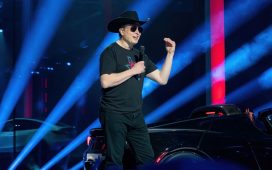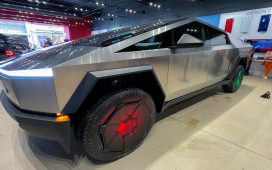Torc Robotics will replace its co-founder with a Daimler Truck executive as CEO.
Peter Vaughan Schmidt, 52, head of Daimler Truck’s Autonomous Technology Group, will take over from Torc co-founder Michael Fleming effective Oct. 1, the company said Thursday.
Fleming, 43, will stay on as a board member and strategic adviser, the company said.
Torc is an autonomous technology subsidiary of Daimler Truck North America.
Torc, founded in 2005 by Fleming and fellow graduate students at Virginia Tech, initially developed autonomous technology to retrofit vehicles for military, mining and agriculture applications.
Daimler Truck North America acquired a majority stake in Torc in early 2019. Schmidt played a crucial role in Daimler’s investment in Torc and has since worked closely with Fleming. Before joining Daimler in 2005, Schmidt was an automotive consultant at McKinsey & Co.
Focused on trucks
“I worked hand in hand with Michael and wasn’t able to do what he did: co-found Torc and drive it for 17 years,” Schmidt told Automotive News. “But I feel my expertise in running large global organizations will bring Torc to the next level.”
Torc is now focused on developing autonomous technology for Daimler’s flagship Freightliner Cascadia Class 8 truck.
Shortly after the Daimler investment, Torc and Daimler Truck announced SAE Level 4 autonomous testing of the Cascadia on public roads in Virginia. A Level 4 system allows a vehicle to drive itself in most conditions. In 2020, Torc began testing its autonomous technology on highways in New Mexico and later expanded to Texas.
With Daimler’s backing, Torc increased its head count fourfold to about 600 and expanded operations from its headquarters in Blacksburg, Va., to a testing center in Albuquerque, N.M., in 2020. This year, Torc opened an engineering office in Austin, Texas, and a technology center in Stuttgart.
Gaining traction
Torc’s CEO shuffle comes as autonomous trucking is gaining traction as the first avenue for commercializing self-driving vehicles. Competitor Aurora Innovation has said it’s prioritizing the development of autonomous truck technology over robotaxi deployment.
Other autonomous trucking developments include:
• Embark tested its autonomous big rigs over the winter on snow-covered public roads in Montana.
• Einride received regulatory approval to operate its podlike trucks on U.S. public roadways.
• Aurora and Kodiak Robotics have trained their self-driving trucks to successfully pull onto the highway shoulder when problems arise.
Integrated on the assembly line
Daimler Truck is also working with Waymo, the self-driving division of Google parent company Alphabet, but in a very different capacity, Schmidt said.
“We’re developing redundancy for all critical safety systems and then shipping the trucks to Waymo, and they add their sensors and software,” he said.
Daimler integrates Torc’s self-driving technology into Cascadia trucks on the assembly line, Schmidt said. And it is specifically designed for the Cascadia and trucking.
“It’s not intended to work on a robotaxi or a shuttle or anything else,” Schmidt said. “Just on our truck and to be the best application possible.”
‘First profitable application’
Schmidt said he believes trucking is the “perfect application” for autonomous technology. “It can run at highway speed and deliver goods safer, faster and cheaper,” he said.
“It will add capacity needed when there are driver shortages,” he said. “It’s just this sweet spot of what the technology can do. I think we are just scratching the surface on the opportunities and believe that trucking will be the first profitable application of autonomy.”








